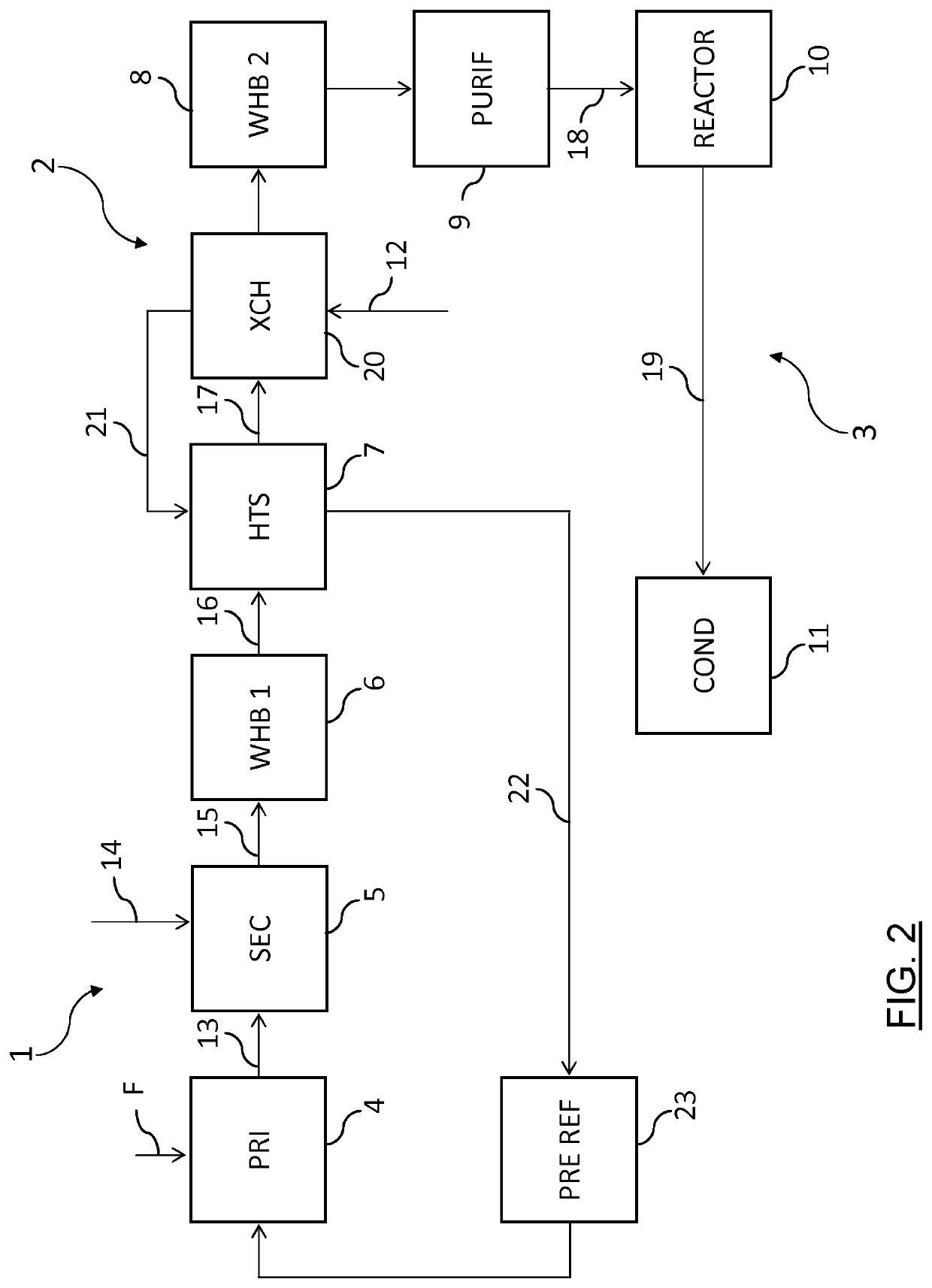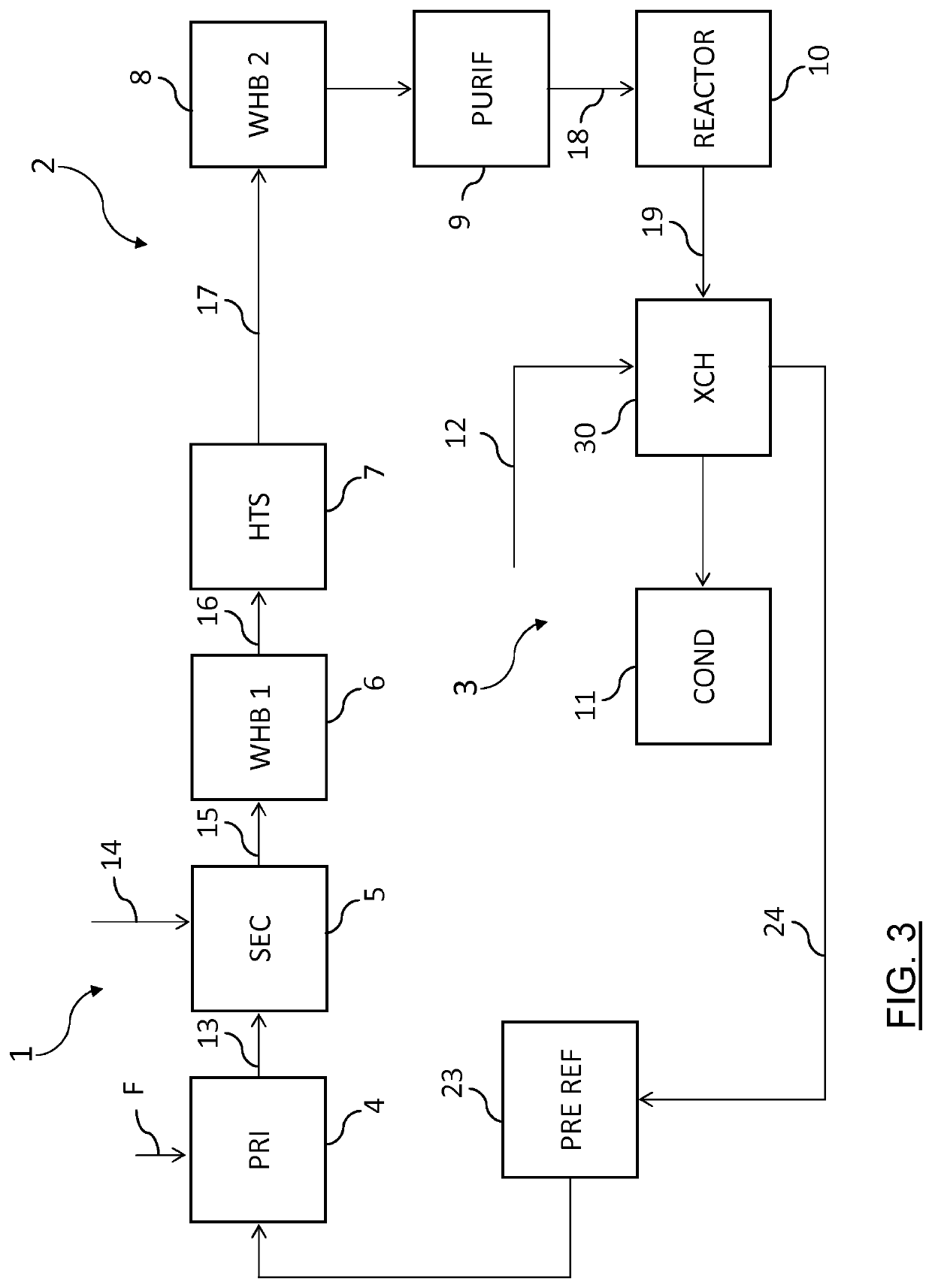Process for the synthesis of ammonia
a technology of ammonia and synthesis process, which is applied in the direction of chemistry apparatus and processes, chemical production of bulk chemicals, energy input, etc., can solve the problems of less hydrocarbon feedstock available, consumption of fuel and related costs, pollution of atmosphere, etc., and achieves the effect of increasing the reforming capacity, and reducing the amount of ammonia
- Summary
- Abstract
- Description
- Claims
- Application Information
AI Technical Summary
Benefits of technology
Problems solved by technology
Method used
Image
Examples
Embodiment Construction
[0053]FIG. 1 illustrates a block scheme of a plant according to the prior art comprising: a front-end including a reforming section 1 and a purification section 2, providing a make-up synthesis gas, and a synthesis loop 3 for the conversion of said synthesis gas into ammonia.
[0054]The reforming section 1 for example comprises a primary reformer 4 and a secondary reformer 5 and a first waste heat boiler 6. The primary reformer 4 is fired by a fuel F, for example natural gas.
[0055]The purification section 2 comprises a high-temperature shift reactor 7, a second waste heat boiler 8 and further equipment denoted by block 9. Said block 9 may include one or more of: low-temperature shift reactor (LTS); remover of carbon dioxide, methanator, hot recovery exchangers (e.g. to preheat water), cryogenic purification etc. according to known technique.
[0056]The synthesis loop 3 comprises a synthesis reactor 10 and further equipment for processing the effluent of the loop, for example an ammonia ...
PUM
| Property | Measurement | Unit |
|---|---|---|
| peak temperature | aaaaa | aaaaa |
| temperature | aaaaa | aaaaa |
| temperatures | aaaaa | aaaaa |
Abstract
Description
Claims
Application Information
 Login to View More
Login to View More - R&D
- Intellectual Property
- Life Sciences
- Materials
- Tech Scout
- Unparalleled Data Quality
- Higher Quality Content
- 60% Fewer Hallucinations
Browse by: Latest US Patents, China's latest patents, Technical Efficacy Thesaurus, Application Domain, Technology Topic, Popular Technical Reports.
© 2025 PatSnap. All rights reserved.Legal|Privacy policy|Modern Slavery Act Transparency Statement|Sitemap|About US| Contact US: help@patsnap.com



